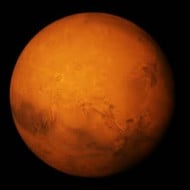ISRU means In Situ Resource Utilization. Because leaving Earth is so expensive it is better to get supplies somewhere else, like the moon. If you want to live on Mars you get what you need on Mars. The doc Fnord cited is basically the blueprint Jeff Bezos is working on. I bought it in book form on amazon before I discovered it was free on the internet. It is one of the two books I cite on the other thread about the cost of a space ship. The other book is the one Elon Musk is following. The first technology to develop is cheaper launches from Earth. That makes starting any project in space more doable. Elon has made good progress in that with reusable rockets. Jeff isn’t far behind. Fnord’s doc also cites the following things as possible imports to Earth: space based Solar energy (photovoltaic or thermal focusing- both used today on Earth) and information / innovation. Most things in space are more expensive to take to Earth than to just find on Earth. So the more reasonable goal is to move to space and then stay there.
There is more solar energy to be harvested in space than ever hits earth. So that is the next technological to develop. Radiation protection is needed but really is already solved: a thick layer of polyethylene will work, with aluminum for structure and support. Some innovations in composite materials that have the strength of aluminum and the radiation properties of polyethylene could be useful. A large donut shaped structure that spins could provide artificial gravity (other shapes could work too). Moon rocks contain oxygen. Once you have space based solar you have plenty of energy to get the oxygen out of the rocks, and do other endothermic chemistry. When people breath they don’t use up all the oxygen, a lot is breathed out again as carbon dioxide. This can be converted back to breathable oxygen. Already done on the ISS. Could be made more efficient. Mass transportation and manufacturing come next. Strangely hydrogen is hard to come by on Mars, it escapes from the atmosphere into space. But it exists in the form of water in the permafrost and at the poles.
To make you space ship independent of the sun fusion reactors could be developed. A fusion reactor recently achieved better than break even (more energy out than in). This will probably continue to develop.
Hydroponics to grow food or something like vats of protein producing microorganisms.
Think space yogurt.
On Mars you might raise fish.
On Mars or on the Moon you can also use regolith (dirt) and water to block radiation.
Human longevity and health in general would be key if you wanted to go to the next nearest star. You don’t want a virus to wipe you out before you get there.
You might want to sustain more than one generation of humans on the trip.
Carbon negative technologies like making diamonds out of carbon dioxide (already being done) would help Earth to stay healthy- space based solar (using lasers to beam the energy down to earth) might provide for energy to engage in carbon negative endothermic chemistry. You would have to be careful. Too much space based solar energy could end up heating the planet. Better to have more people living in space and using the energy there.
_________________
ADHD-I(diagnosed) ASD-HF(diagnosed)
RDOS scores - Aspie score 131/200 - neurotypical score 69/200 - very likely Aspie














